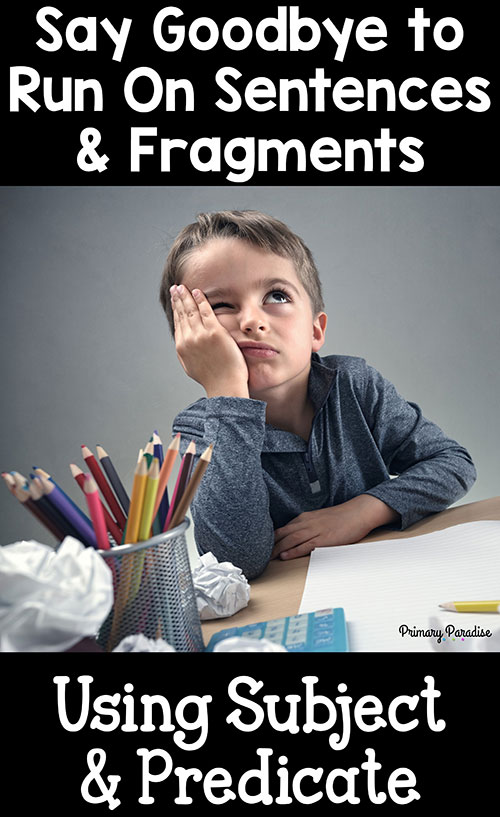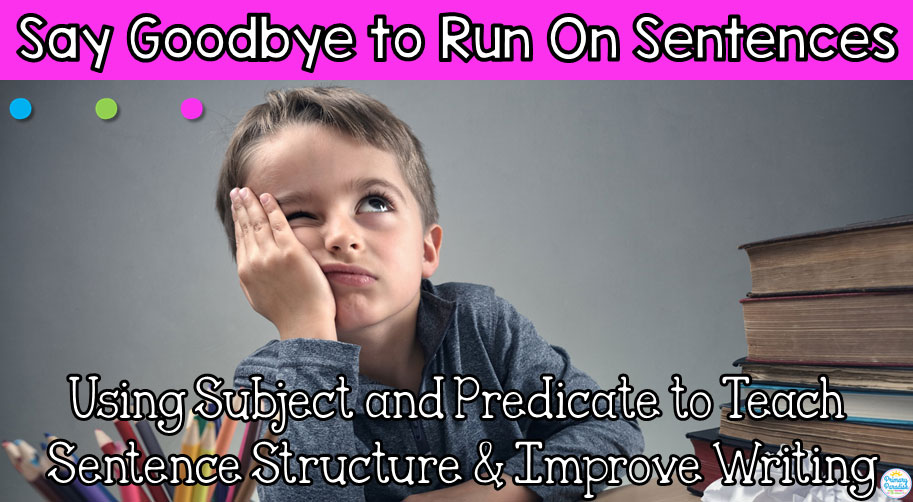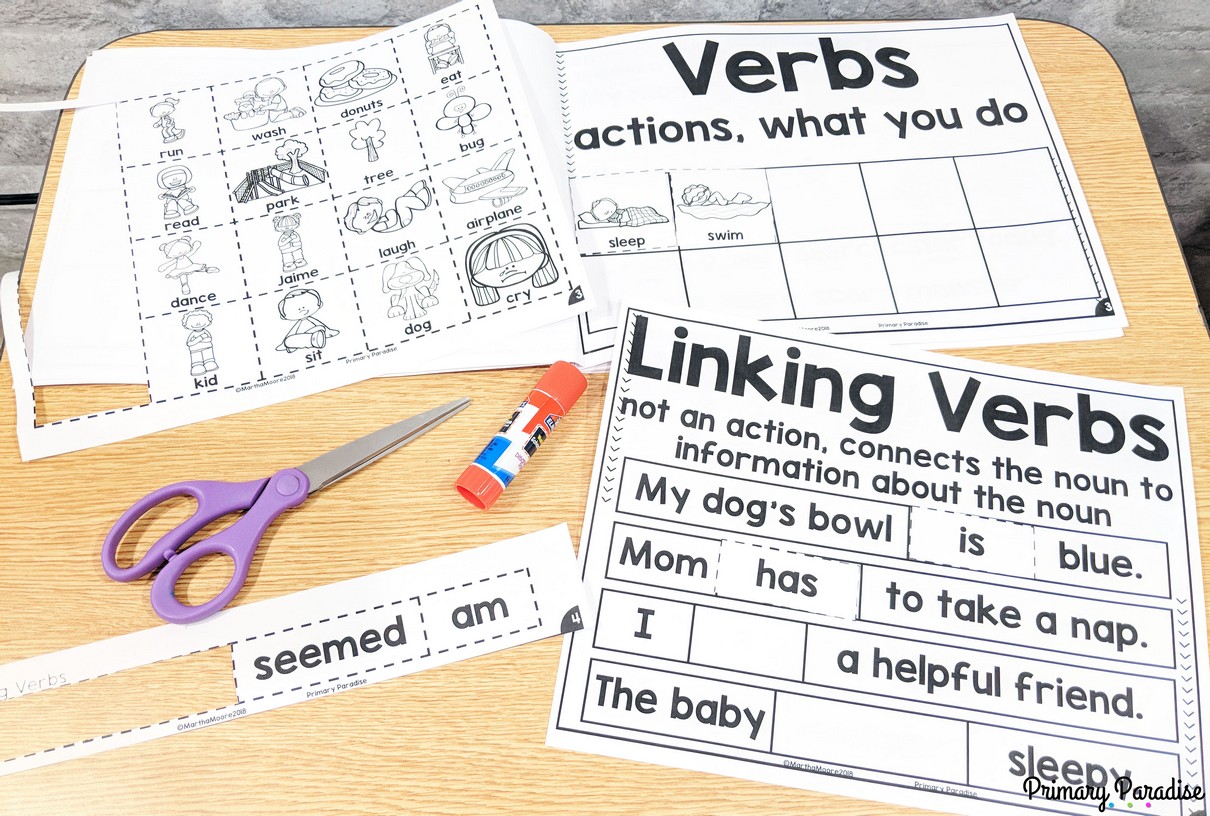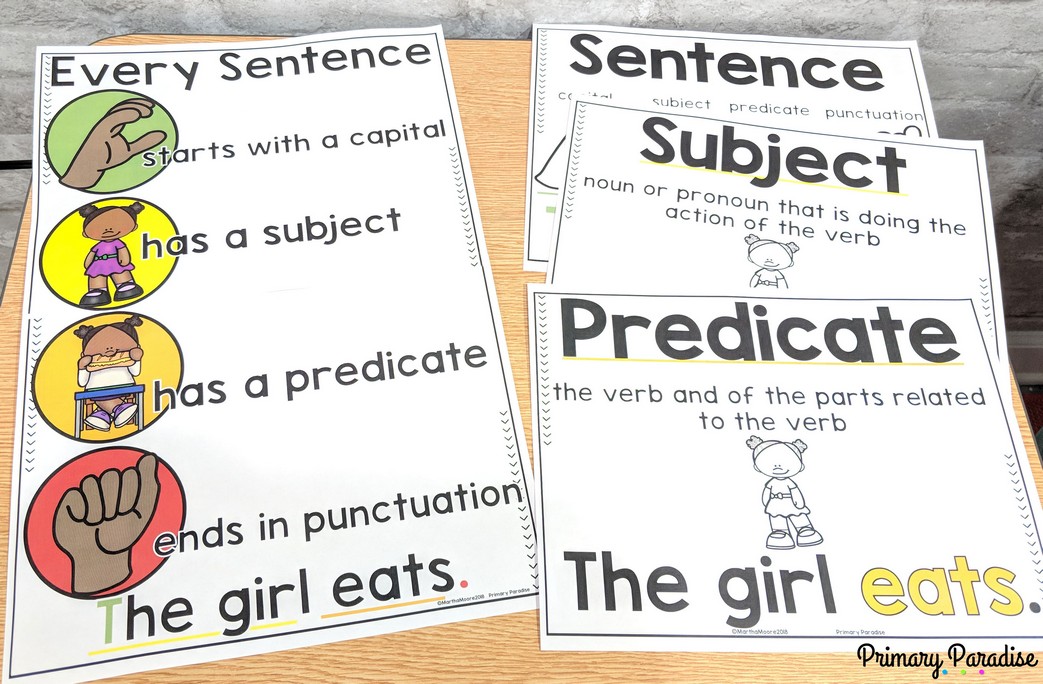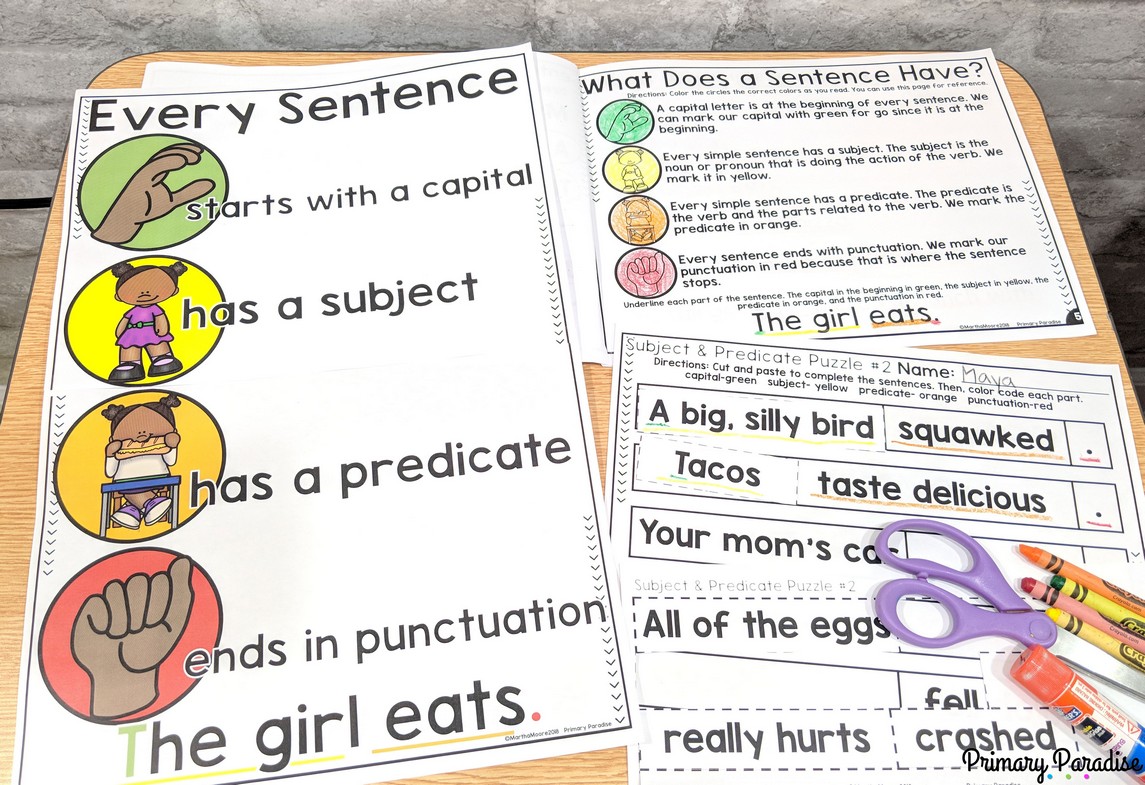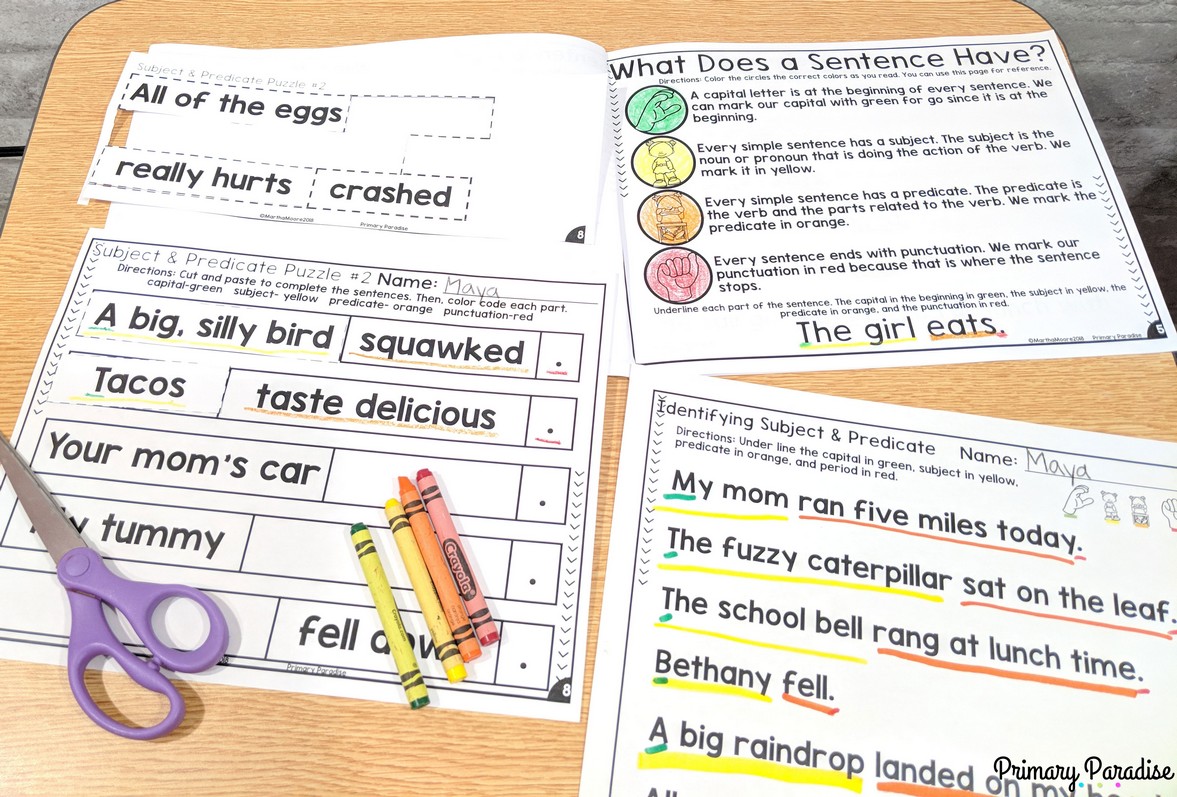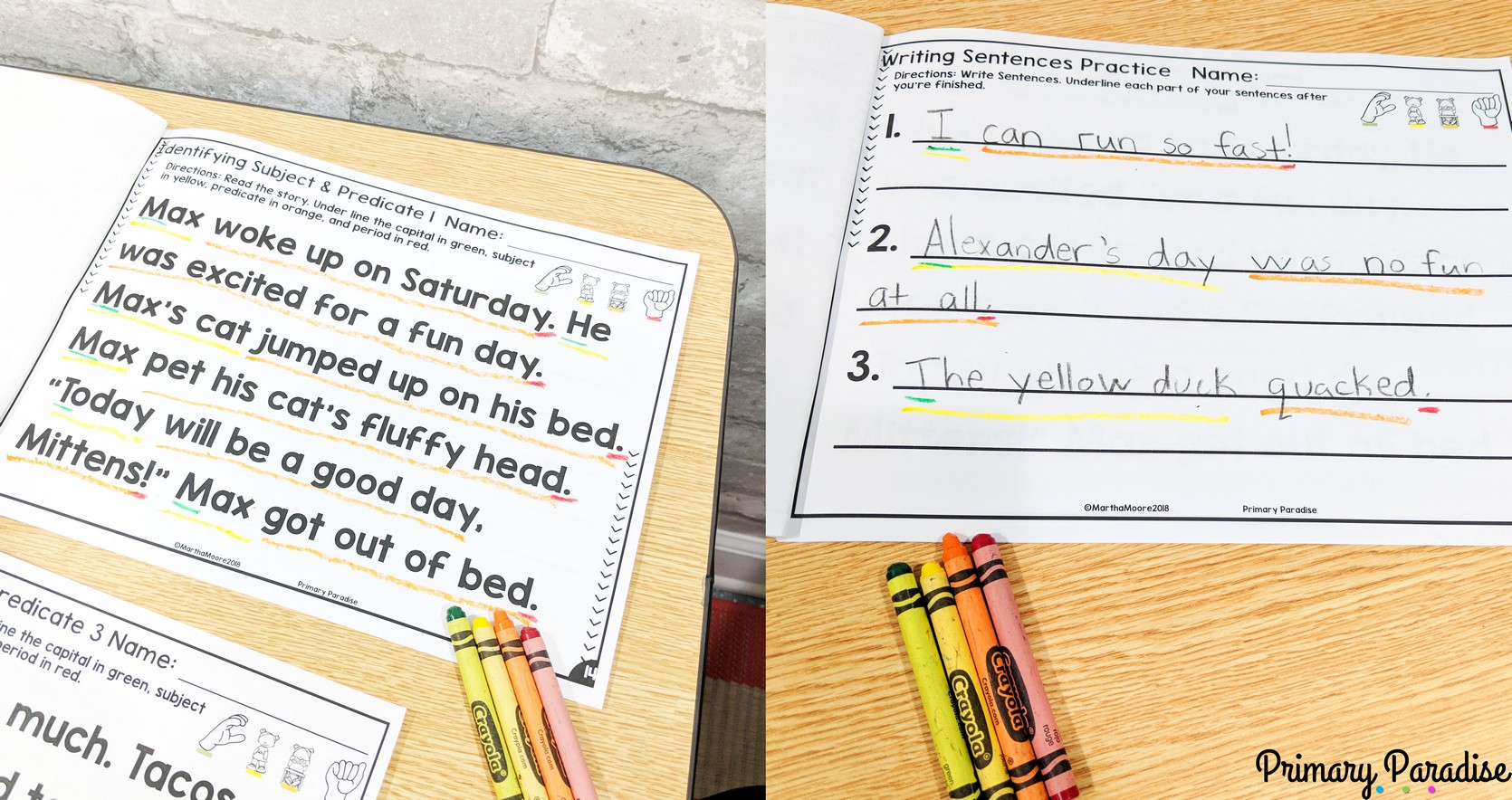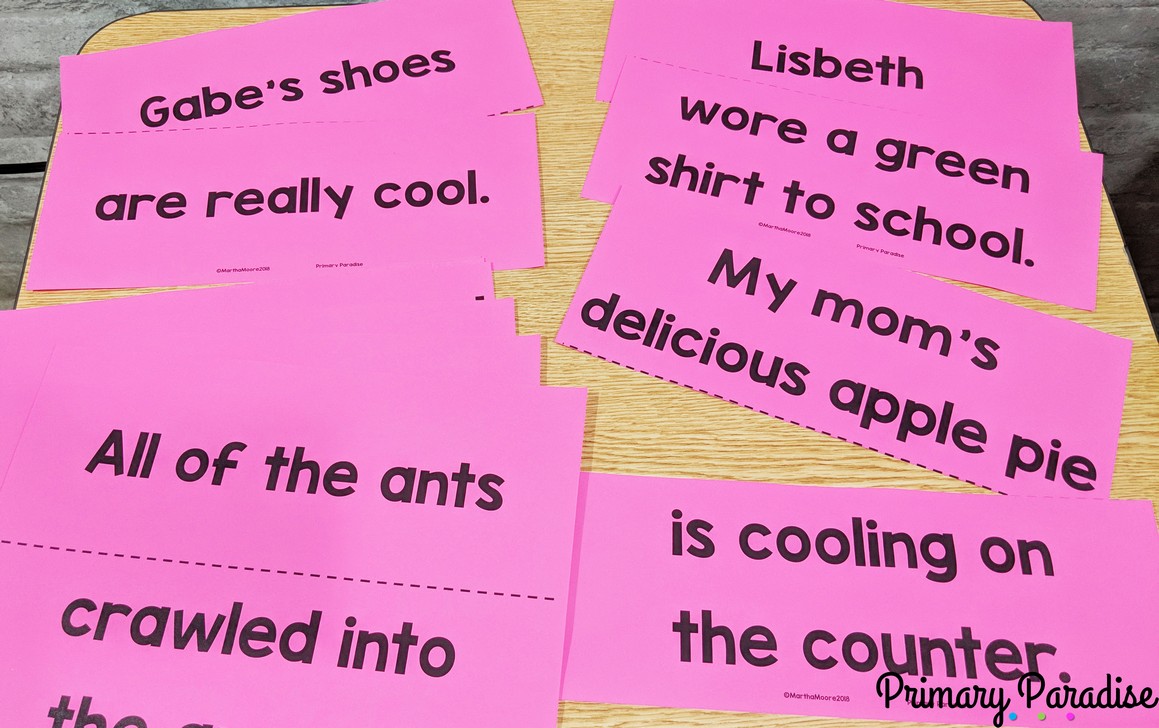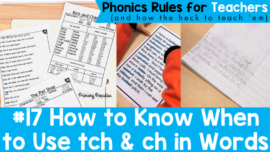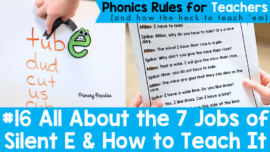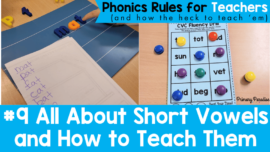Understanding how to write complete sentences, knowing where to put punctuation between sentences to avoid run on and fragments, and understanding what makes a complete simple sentence is a difficult skill! This post will share how to teach these skills using subject and predicate.
Subject and Predicate: What’s That?
Do your students know what a subject and predicate is? My guess is, probably not. However, today I’m going to share how using subject and predicate to teach our students about sentences will put an end to some common classroom frustrations. I’m talking about run on sentences, missing punctuation, missing capital letters, fragments, or those dreaded story long sentences where you don’t even know where to start! Sound familiar? If so, read on! I promise you’ll thank me.
A Sentence is a Complete Thought: But What The Heck Does that Even Mean?

I’ve previously address very basic sentence writing here, but today we’re going to dive a little deeper. In English, sentence structure is an incredibly complicated thing. Students often struggle with understanding what actually constitutes a complete sentence, when a sentence ends, and how to edit their own sentences in their writing. Our students will often write run on sentences or incomplete sentences if we don’t teach them how to identify a solid, complete sentence.
So what do we do? I know as a student, and even as a teacher, the go to explanation is that “a sentence is a complete thought”. Um… okay, but what does that mean? I’m always a proponent for making learning concrete and relatable, and honestly, that description of a sentence is both vague and not at all concrete. The other issue with saying that “a sentence is a complete thought” is that it’s just not true. Sometimes a sentence shares more than one thought. Sometimes a sentence does not complete a thought. However, teaching students that sentences are made up of subjects and predicates and showing them how to identify each can give our students a road map as they are writing their own sentences and stories.
A New Way to Teach Complete Sentences
When I realized that my second graders were very much struggling with understanding sentence structure, I took a step back and did some research. What I found was that we can use subject and predicate as a tool to help our students improve their own sentence writing! Here’s how.
First, we start with discussing nouns and verbs. Hopefully this is simply a review, but to understand subject and predicate, students need to understand what nouns and verbs are. Be sure to also take some time to discuss linking verbs (or verbs that do not perform an action, but rather connect the noun to information about that noun). Examples of linking verbs are: is, are, am, was, has, become, seems). (Find a great, clear, definition of linking verbs here.) Once you review nouns and verbs, students will complete a sentence hunt to identify sentences. This opens up a great discussion: how could we tell which groups of words were sentences? Students might say that it just sounded or looked right. This is a great segue into what exactly makes up a sentence.
This is where we show students the sentence poster. These posters break sentences down and explain that every simple sentence has 4 parts. Take a moment to connect subject with the noun part of the sentence- the who or what. Then, connect predicate with the verb part, the action- what the subject is doing.I teach this with a chant and hand motions, which is a great way to use muscle memory for a tough concept. It comes in handy later on when students are writing their own pieces.
Here is the chant I use. (Hand motions are italicized next to the words).
Every sentence! (spread both hands and arms out)
Starts with a capital! (make a C with left hand)
Has a subject! (point to self with thumbs)
Has a predicate! (swing arms vigorously as if running)
End with punctuation! (make a fist with right hand)
Stop Light Colors for Teaching Sentences
Next, have students color code their own anchor chart as you discuss the colors we associate with each part of the sentence. We’re essentially using a stop light analogy, since it’s a very familiar symbol for students. The capital letter is green because it’s the beginning of the sentence. Your student probably already associate green with GO! The subject is yellow, the predicate is orange (as we’re nearing the end) and the punctuation is red because that’s where the sentence STOPS.
Next, students need to look at examples and practice color coding. This is important because, even with simple sentences, there are varying lengths and types of subjects and predicates. This activity takes students from a very simple two word sentences and slowly expands both the subject and predicate. This is an activity I recommend completing together. It’s a perfect “we do” activity. Take it slow. Discuss. Observe. Be aware of errors students make, and discuss again.
Take your time with this because giving students this foundation with identifying the parts of these sentences will eventually translate into their own writing. You’ll be able to use the color coding for them to check their own writing, and eventually, they won’t need to color code. They’ll be able to simply look for the parts in each sentence.
Practicing Sentences with Gradual Release
From here, I like to have students complete subject and predicate puzzles. Looking at subject and predicate in isolation like this is an easier step towards independence. Be sure to remind students that the first part of the puzzle will be the subject and the second is the predicate.
Next, students can move to identifying the subject and predicates on their own in sentences, then they can write their own sentences.
Lastly, students can identify subject and predicates in a short paragraph and then finally write their own short story and color code it to check for their subjects and predicates. Have them swap with a partner and share.
I also like to throw a partner puzzle in there somewhere. It can be used before students do their own subject and predicate puzzles, while you’re introducing subject and predicate, or really any time! Not only is it great practice, but it gets your students up and moving. I also recommend having students, once they find their partner, color code their sentences and glue them together to display in the classroom.
What About Questions and Compound and Complex Sentences?
For the sake of simplicity and not causing confusion, I only address simple sentences when introducing this concept. While students might write compound sentence in their writing (and hopefully they do), adding in questions and compound sentences while first learning subject and predicate can be incredibly overwhelming. However, these same principles apply to compound and complex sentences. If and when they come up in your class, you can still use the chant, color coding, and rhyme. The main goal of this resource is to teach students about subject and predicate. This will ultimately help them improve their own writing.
I’ve Taught Subject and Predicate: Now What?
The thing about using this method to help your students improve their writing is that you can use this all year long. As students are editing their work, encourage them to make sure each sentence has all 4 parts. Have students color code their sentences if needed! The English language is incredibly complex. This is one way to make it easier for our students to be successful.
You can find this resource on it’s own here, or in my full year writing curriculum here.
Looking for more writing ideas? Sign up for my free writing email course below!
You can join my FREE Facebook Club for k-2 teachers here!
Find me on Instagram, Facebook, Twitter, and Pinterest!
